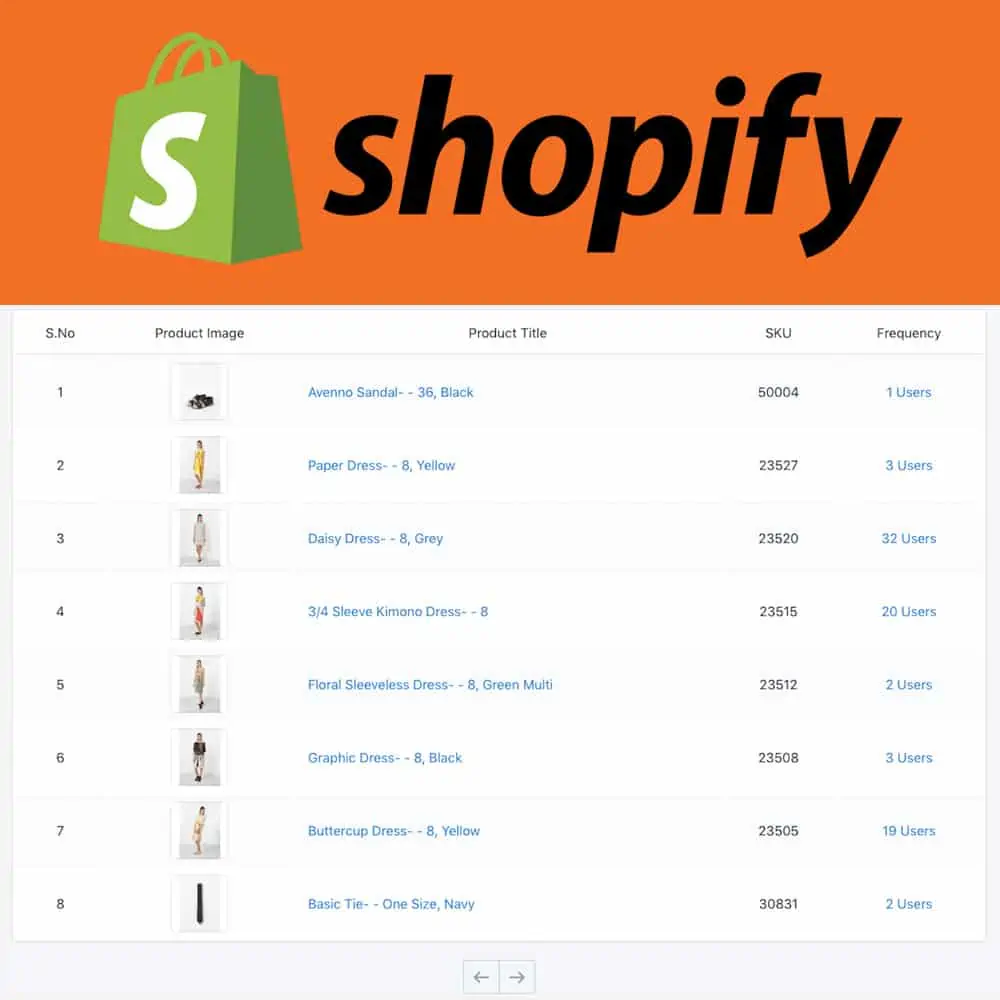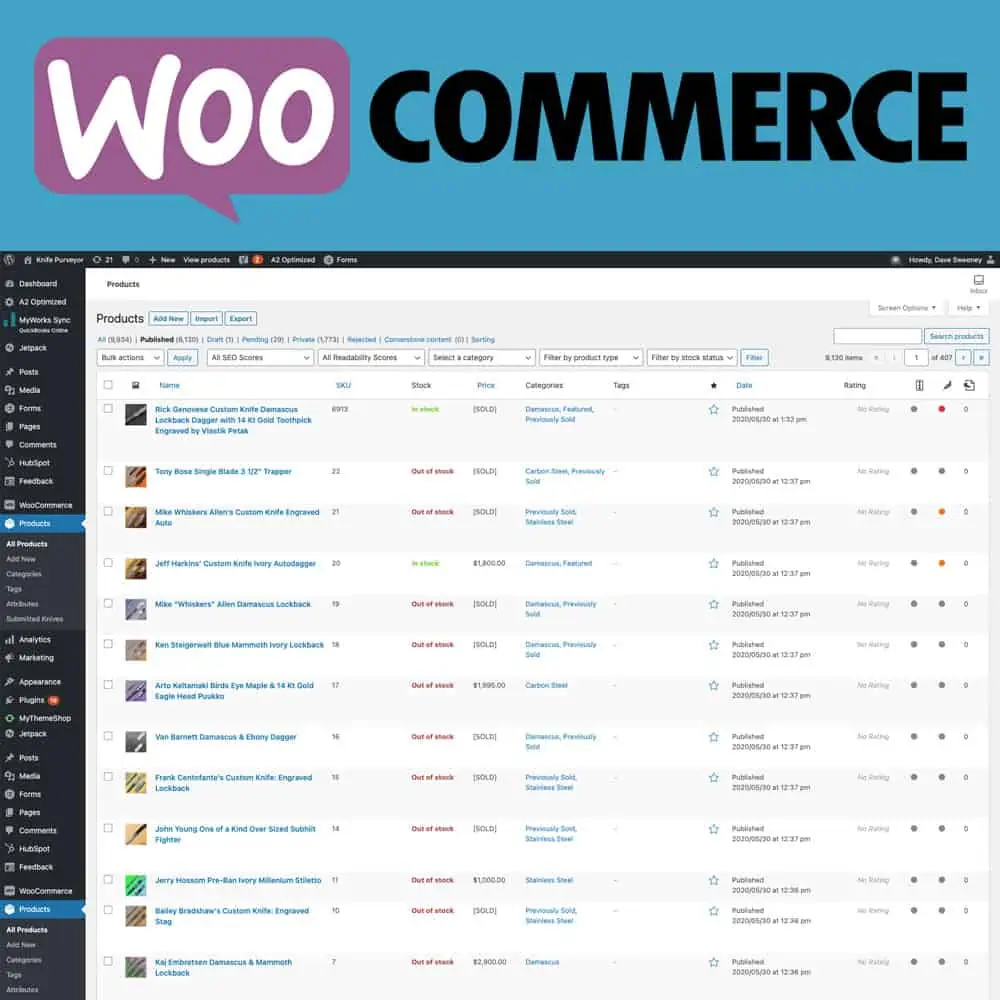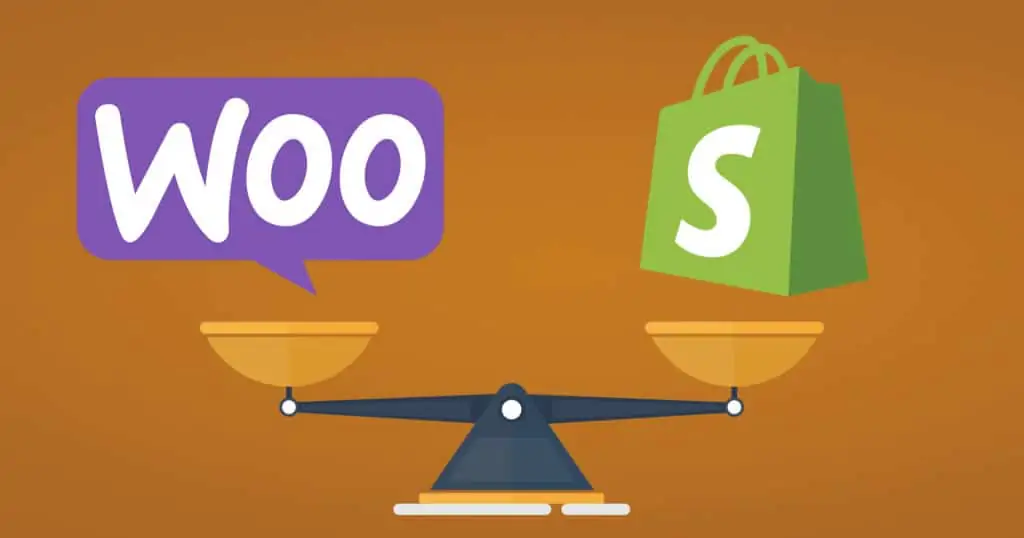Running an online store or business requires a platform like Shopify or WooCommerce. Which one is better for your business?
- WooCommerce is better for established businesses who need ultimate flexibility for their online store, secure data protection, multiple payment gateways, and multi-currency sales.
- Shopify is better for new businesses or online stores that focus on ease of use, multiple users, a simple product list, and a fast time to market.
In short, Shopify launches newbies faster but WooCommerce has more powerful features for businesses that intend to compete with the big players.
Our review isn’t quite that compact and short, though. We have many details to show you why we prefer WooCommerce.
Table of Contents
- 1Market share of Shopify & WooCommerce
- 2How to Choose an eCommerce Platform?
- 3What is unique about the two eCommerce platform?
- 4What makes Shopify unique?
- 5What WooCommerce Offers?
- 6Who uses those platforms?
- 7Feature Comparison of Shopify & WooCommerce
- 8How Easy Is It To Launch a Store on Each Platform?
- 9How Easy to use Shopify & WooCommerce?
- 10Themes and flexibility
- 11Help and Support
- 12Performance
- 13Pricing
- 14SEO
- 15Payment Methods
- 16Control Over Your Data
- 17Summary, PROs & Cons of Each Platform
- 18WooCommerce Pros & Cons
- 19ShopifyPros & Cons
- 20WooCommerce Extra Functionality is Not Tied to Plans
- 21Enjoy the Freedom of Open Source
- 22Typical Questions
- 23Should I switch from WooCommerce to Shopify
- 24Does WooCommerce take a percentage of sales
- 25What percentage does WooCommerce take (zero)
- 26Conclusion
Shopify vs WooCommerce: Market Share
eCommerce store owners use both platforms extensively. These two platforms power 39% of the top 1 million commerce websites. WooCommerce has a slight edge with 21% of the total, but Shopify and WooCommerce are the two major ecommerce platforms.
WooCommerce’s Growth and Stats
WooCommerce is the largest ecommerce platform, with roughly 20-21% of market share. The popularity of this solution is probably because of its connection to WordPress. WordPress is huge and powers about 40.4% of ALL websites on the internet. WooCommerce is available as a free WordPress plugin.
7.4% of all websites used WooCommerce in January 2021. WooCommerce boosted its market share from 4.7% in 2019 and 5.7% in 2020. This growth comes from more people using the WordPress content management system.

Shopify’s Growth and Stats
Shopify runs the content management system on 3.4% of all websites. eCommerce site owners choose Shopify for 18-20% of online stores. The ability to create an online store easily and quickly powered Shopify’s growth in the past few years.
Shopify supports over 600,000 businesses in over 175 countries. Store owners processed over 1,000,000,000 orders with total sales worth more than $55,000,000,000. These huge numbers establish Shopify’s reputation as an ecommerce platform capable of supporting any business.
How to Choose an Ecommerce Platform
Choosing a platform for your online store is simple when you consider the most important factors.
Once you’ve evaluated all nine of these factors, one of these platforms will stand out as a clear winner for your site. We’ll break down all nine factors and how each platform compares in just a moment.
First, let’s talk about what makes each one unique. Also, a sample of who uses each platform will help you understand what you can do with Shopify and WooCommerce.
WooCommerce vs Shopify: What Makes Them Unique
WooCommerce and Shopify both have to do similar things. They both need to connect your business to your customers. They have to incorporate payment providers, products for your store, a messaging solution, inventory management, and some form of web hosting. So, what makes them different?
What Makes Shopify Unique?

Shopify is unique because of how it packages everything together in a single solution. It is very easy to create an online store, set up payment methods and start doing business quickly. Here are some specific things Shopify does to make life easier for new store owners:
- Web hosting and an SSL certificate come in every package.
- Shopify is its own payment gateway, so taking payments is easy to organize.
- Shopify comes with many themes available without having to find them.
What Makes WooCommerce Unique?

WooCommerce is unique because it is open source and free. Of course, hosting a website isn’t free, so most people pay something to have a WooCommerce site. The software itself is free, though. Here are some other reasons WooCommerce is so popular:
- Open source software makes it possible to find thousands of extensions or create your own.
- Customization and flexibility are off the charts.
- Built on WordPress, which is the world’s most popular CMS.
Shopify vs WooCommerce: Who Uses Them?
Both WooCommerce and Shopify boast some big names in their client list. Hundreds of thousands of businesses use one of these two platforms. Here’s a small selection of which companies choose each platform:
| SHOPIFY | WOOCOMMERCE |
|---|---|
| • Bulletproof | • Clickbank |
| • Hasbro | • Blue Star Coffee |
| • Heinz | • Sodashi |
| • Crabtree & Evelyn | • All Blacks Rugby |
| • BBC | • Airstream Supply Company |
Each platform hosts some big hitters and major online stores.
You can view more WooCommerce stores on their showcase page. For a list of great Shopify stores, check out We Make Website’s list of 37 of the Biggest Brands and Names on Shopify.
Now that you see a little of what is possible, let’s take a short swim (not a deep dive) through the features we mentioned earlier.
WooCommerce vs Shopify: Feature Comparison
It’s time to get back to the features we mentioned earlier and break them down for you. Shopify and WooCommerce each have strengths and weaknesses. We’ll show you where these are so you can choose the best e-commerce solution for your site.
How Easy Is Launching a New Store?
WooCommerce and Shopify have two different ways of approaching their role as an ecommerce platform. Shopify is a bit like Apple and WooCommerce is a bit like Android. This means Shopify is a little easier to learn and use, but WooCommerce has more power and flexibility.
Shopify New Store Advantages
With Shopify, everything you need exists in Shopify’s ecosystem. Themes, plugins, and major functions are all included. Some functions might require a more expensive plan, but they are in the system somewhere.
WooCommerce New Store Launch Highlights
WooCommerce runs on WordPress, so adding new pages and products is simple if you’ve already got a store.
The learning curve with WooCommerce is definitely steeper. The large WordPress community and support help ease new users through the launch process.
Shopify vs WooCommerce: Ease of Use
You may already know where this one will go, but let’s be clear: Shopify is easier than WooCommerce for most people.
Shopify Makes Managing Your Online Store Easy
Shopify is an integrated ecommerce platform that includes and explains everything you need. Consistent training is available through Shopify Compass and the Shopify Partner Academy.
WooCommerce is Powerful but Technical
WooCommerce is better for people who have experience with WordPress and online stores. The level of freedom available to users is huge, but this comes with the responsibility of knowing how to do the right things. Setting up your store, getting the theme working right, and sorting out the payment gateway options must all be done correctly.
Many people, especially newer businesses, use a service like Bluehost to provide web hosting and WooCommerce integration. These services make starting out simpler.
Beautiful Themes and Design Flexibility
Everyone wants their store to look gorgeous. The key to a consistent look that is easy to manage across multiple pages (hundreds of them!) is to use a theme.
Shopify Includes Free Themes and Charges for the Rest
Shopify comes with 10 free themes. You can purchase other themes for $100-$180. Shopify’s theme collection is curated, so the overall quality is very good. Every theme should work with any store, even though you might have to tweak things a bit.
The theme’s designer and Shopify’s platform limit customization within each theme. Your store can look great, but many owners find there are things they wish they could do but cannot.
WooCommerce Has a Huge Forest of Themes
WooCommerce doesn’t come with a massive library of free themes, but there are three free themes called Storefront, Boutique, and Deli. Storefront is the main theme and there are many child themes available. Purchase themes directly from WooCommerce for as little as $39.
WooCommerce has the advantage of the massive community of WordPress developers. There are sites like Theme Forest that feature hundreds of WooCommerce themes.

WooCommerce vs Shopify: Help and Support
Both WooCommerce and Shopify offer help and support. As anyone who has tried setting up a website or online business knows, you’ll need help, eventually. The key difference between Shopify and WooCommerce is the basic approach again. Shopify wants to do everything for you. WooCommerce offers a fantastic plugin and support for its plugin. Broader support comes from the community of WooCommerce users.
Shopify Customer Support
Shopify’s customer support starts with chat by phone, email, or live chat with their support team. They make this level of help available 24/7 for their customers. There are many FAQ pages, community guides, and a setup wizard to introduce new users to Shopify’s features. All this support makes it easy for new people to use Shopify to start building their ecommerce empires.
WooCommerce Customer Support
To learn more about WooCommerce, and view a video setup guide, read our What is WooCommerce guide.
WooCommerce vs Shopify: Performance
Performance is a loaded term. What do we mean? Instead of a WooCommerce vs Shopify head-to-head, it may be better to look at a few key performance metrics.
Is Shopify Faster Than WooCommerce?
Shopify is faster than WooCommerce. There, we said it. The difference in speed doesn’t have to be huge, though. You can achieve very good speed results with WooCommerce if you choose a quality hosting provider, optimize your site, and stay on top of updates. Shopify does most of these things for you, though.
Is WooCommerce More Powerful Than Shopify?
WooCommerce has more features than Shopify because people keep adding plugins and extensions to the system. Chances are, if you want a feature then someone built it already. A simple example of performance is customization. With WooCommerce, you can have dozens of product options and variations – there’s no limit. Shopify limits you to three options. WooCommerce has more flexibility, so it will perform better for stores that have lots of customizable products or many options.
Which Ecommerce Platform is Best for SEO?
WooCommerce is better for SEO because it offers SEO-focused plugins and more content marketing capabilities. Blog away with WooCommerce powered by WordPress. Everything you want to do with a blog can be done. Shopify has a blog function as well, but it’s not as good as WordPress. You could link your Shopify blog to WordPress, though.
WooCommerce vs Shopify: Pricing
WooCommerce is free. Shopify costs money. WooCommerce wins.
Right?
Not so fast.
Both platforms have extra costs attached to features your online store is going to need. The larger your store grows, the more these extra features will cost.
Is there a clear winner on price? Yes. Here’s a rule:
Small, simple stores will probably be cheaper on Shopify. Larger stores with advanced reporting, omni-channel sales, and multiple payment gateways will cost less with WooCommerce.
Payment Methods
Shopify Payments is sufficient for many Shopify stores, especially at the beginning. Later, omni-channel sales and added payment gateways will make things more difficult. WooCommerce accepts the major payment systems without any problem. Other payment apps give access to gateways for all kinds of payments and currencies.
Credit card rates and transaction fees can become a big problem with Shopify. Payments outside of the Shopify Pay system can attract small fees that add up to a huge total for an international ecommerce store.
The winner here is WooCommerce because you keep control over the pricing by choosing which ecommerce plugin for payments you add to your plan.
Is Shopify or WooCommerce Safer?
The significant difference between these two comes back to the basic approach to being a platform. Shopify says, “We’ll look after your data. Trust us.” WooCommerce says, “Look after your data. It’s important.”
WooCommerce is an open source, self-hosted platform, so storing and securing your data is up to you. While this kind of ownership makes more work, it also means you can pay for the highest security. Your data is also freely accessible at all times.
Shopify will look after your data and even provides many ways to access it, such as CSV export, API data connections, and site backup via an app (for an extra charge, of course). Shopify has also suffered data breaches in 2020 due to insider actions when rogue employees exported merchants’ databases unlawfully.
WooCommerce is as safe as you make it. Shopify is only as safe as someone else’s protections.
Accounting and Bookkeeping
Successful companies keep track of their books. Inventory management, profit and loss reporting, and tax calculations are all crucial parts of running an online store. So how do our two competitors match up for bookkeeping and accounting?
Shopify Accounting and Bookkeeping
Shopify has plugin integrations with major bookkeeping software such as Xero, QuickBooks, and Sage. These integrations produce clean reports that are easy for bookkeepers and accountants to manage. Inventory management occurs through Shopify’s Advanced Shopify POS Pro system or through apps like Stocky.
WooCommerce Accounting and Bookkeeping
Accounting and bookkeeping are available as plugins to your WordPress site. WooCommerce integrates with all the major accounting software suites such as Sage, QuickBooks, and Xero. Connections to other software are possible through developers creating integrations. Inventory management is the same. Apps and extensions make inventory management possible and even simple.
To learn more about addons, read our Best WooCommerce Plugins guide.
WooCommerce vs Shopify: Who Wins?
You probably want to know who wins. Which platform is better?
WooCommerce & Cons
ShopifyPros & Cons
WooCommerce Growth is Not Connected to Pricey Plans
Shopify integrations and plans can be amazing for many businesses. However, Shopify also ties you into a plan system that’s only going to increase in cost as your business grows. Need real-time third party shipping costs? The minimum plan for this is $299/month.
WooCommerce is a self-hosted platform based on open-source code. Change it, integrate it, modify it, and expand it as much as you want. Free apps or paid apps are your choice.
Enjoy the Freedom of an Open-Source Experience
WooCommerce brings you freedom to set up your store and website in your own way. Create your brilliant business and start serving your customers in any way you want. If you need more functions, download an extension. Can’t find an extension? Find a developer to create one for you. Want a different theme? Just pick one out of the thousands that are available. Can’t find one? Pay one of the many WordPress theme development experts to create one for you.
In the end, we choose WooCommerce for its freedom, flexibility, and security.
Some Extra Questions
One simple, short guide can’t answer all the questions. We have found two questions come up over and over, so we’ll tell you about them.
To learn more read our How Much Does WooCommerce Cost guide.
Conclusion
WooCommerce and Shopify are both great platforms. Both will get you started building your online empire and help you with brick and mortar stores as well. In the end, we choose WooCommerce because it is more flexible, open-source, and more secure.
Are You Looking for a WooCommerce or Shopify Expert Who Can Build Your Online Store?
If you are looking for a dedicated web design agency please call us at 919-336-1790 or click here to schedule a consultation with one of our web design experts.





